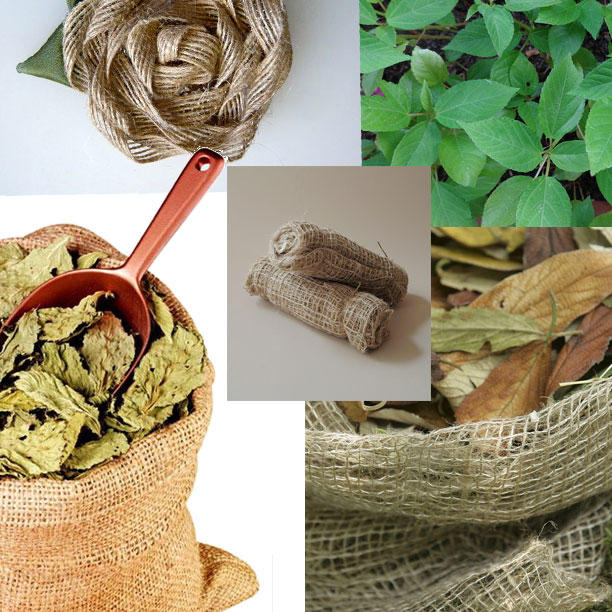Jute: A sustainable plant for Health and nutrition
Jute: A sustainable plant for Health and nutrition
Jute Hessian or burlap is one of the cheapest, affordable and the toughest of all natural fibers and considered as the fiber of the next generation. One hectare of Jute plants consumes over 15 tons of CO2, several times higher than trees. Popularly known as golden fiber, Jute is second only to cotton in world's production of textile fibers. India, Bangladesh, China and Thailand are the leading producers and manufacturers of Jute in the world. It is one of the most versatile, durable natural fibers that are extremely sturdy, strong and has the life expectancy of over a thousand plastic carrier bags. When discarded, jute totally decomposes giving back all its valuable nutrients into the soil.

Such a versatile plant has also tremendous health benefit and medicinal uses. Jute has been grown as a food since 6000 BC. Jute leaves are the main food source in Asia, the Middle East, and parts of Africa. The leaves have a unique flavor and they act as thickeners in soups, stews, and sauces. They are also called saluyot or ewedu or Molokia in different regions of the world. Historians claim that Cleopatra, the Egyptian queen used jute leaves for her beauty and anti-wrinkle regimen.
Health Benefit of Jute leaves
•Jute leaves are rich in calcium, phosphorus, iron and potassium.
• 100 grams of jute leaves contains plenty amount of Vitamin A, thiamine, riboflavin, ascorbic acid, and is also rich in fiber.
• Jute leaves have a large percentage of beta carotene which is good for eye sight.
• Jute leaves help reducing inflammation and pain in the body.
Anti-Aging treatment using jute leaves
Jute leaves have the highest anti-oxidant property in the form of vitamin E. Vitamin E is an essential component for maintaining youth and vitality in the body. The followings are the anti-aging properties of jute.
•Vitamin C in jute leaves improves blood circulation and help to maintain a radiant skin.
•Vitamin E is the main component for anti-aging skin care. Jute leaves have an abundant of it which slows down the aches and pains associated with aging and increases stamina
•A high percentage of calcium in jute leaves contributes to strong teeth and bones and also help the body to maintain a healthy weight.
Fresh jute leaves are bitter. Thawed frozen jute has a spinach texture. It tastes grassy and has an extremely slippery texture. Jute detoxified your body and is rich in both soluble and insoluble fiber.
Jute Leaves Recipe
People who cook with jute leaves use them in soups, stews, curries and vegetable dishes. Here is a quick frozen jute leaves stir fry recipe. Thaw the frozen jute leaves. Drain all the excess water. Heat one table spoon of oil in a pan. Put a tea spoon of garlic and stir fry for a few minutes. Add the jute leaves. And stir fry in medium heat for 5 minutes. Your delicious jute leaves stir fry is ready to serve. Enjoy it with rice or bread.
